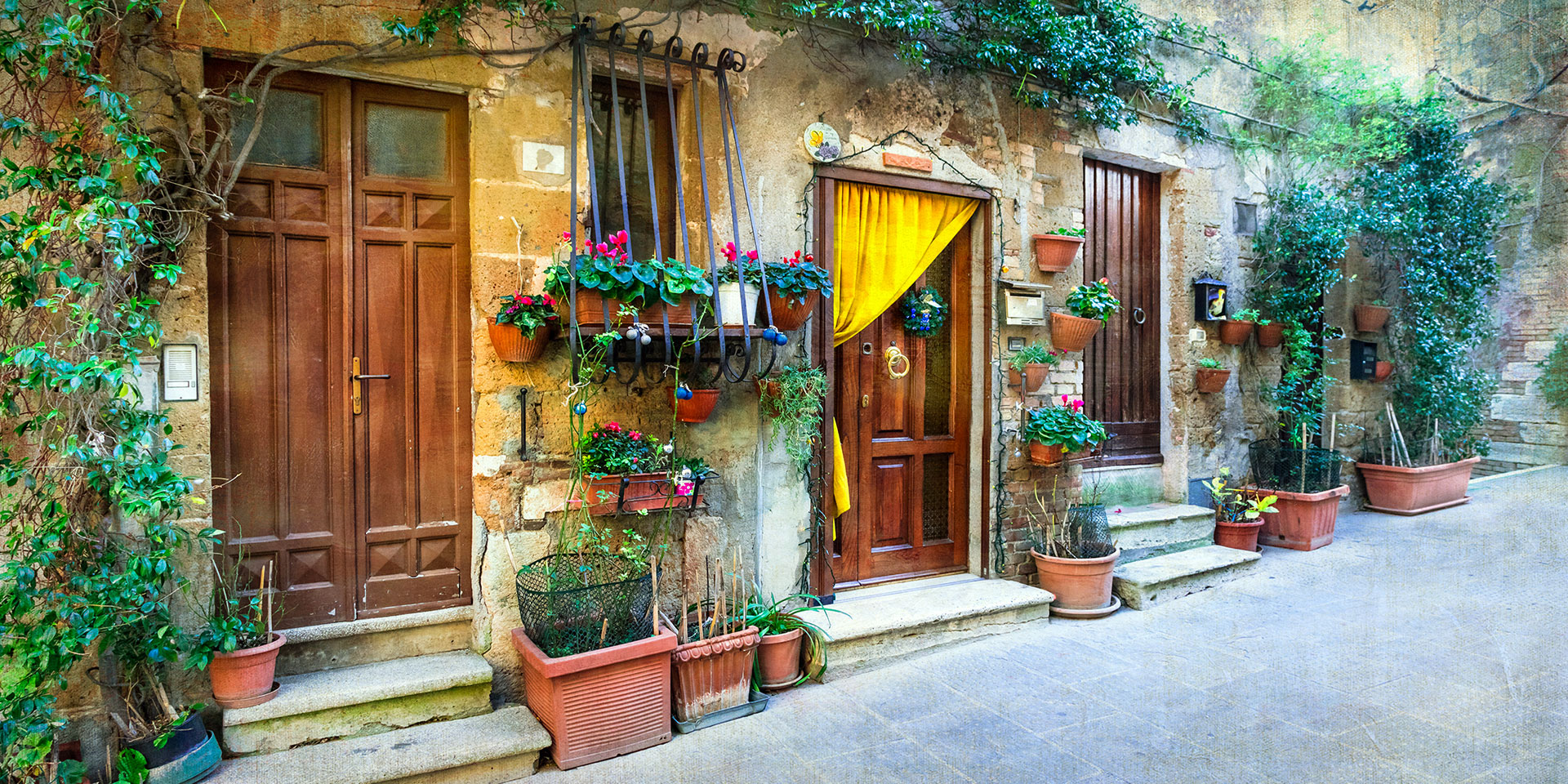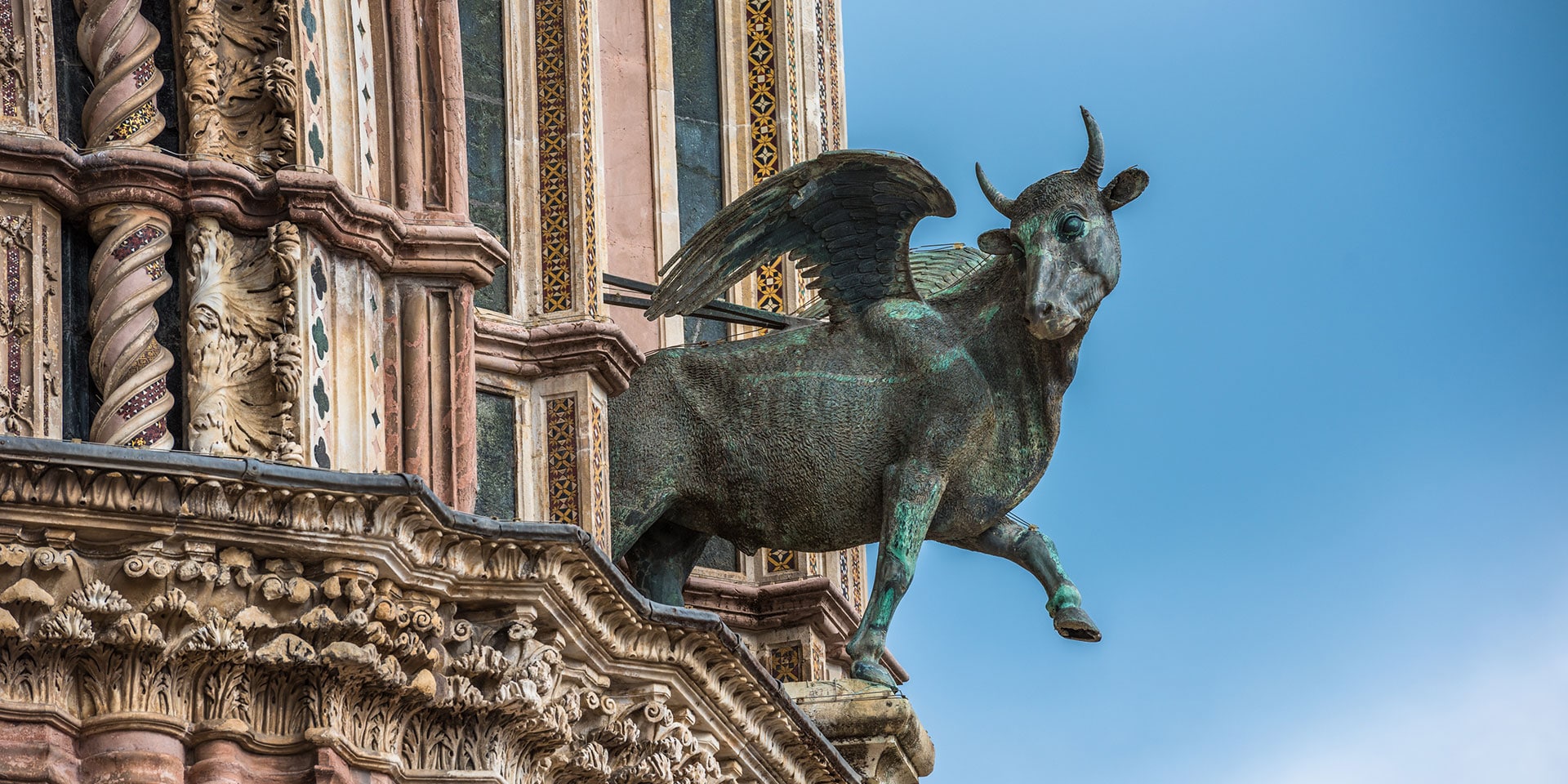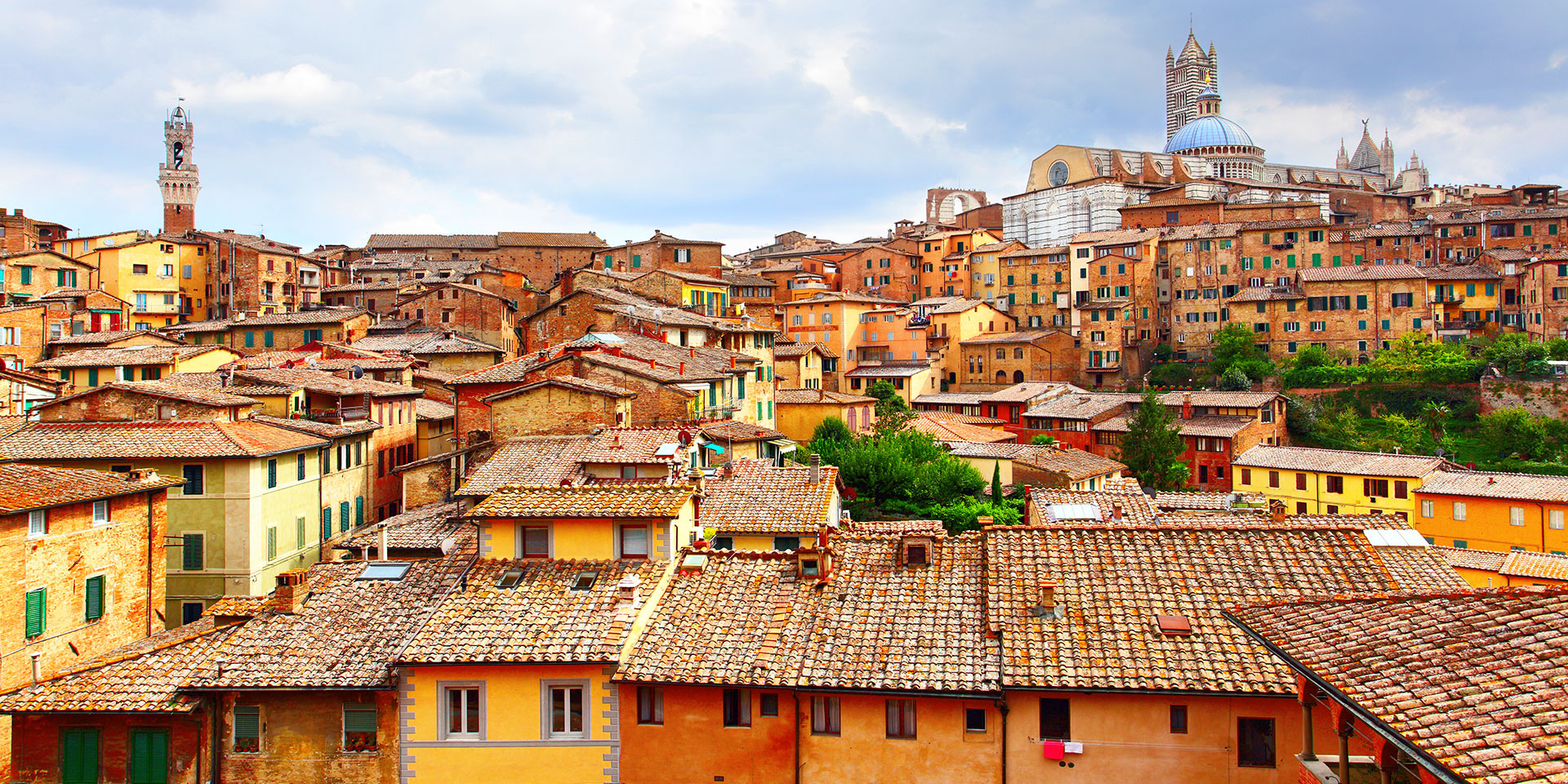Sandwiched between Rome and Florence, an almost mythical swath of earth exists — one where low-rolling, vine-clad hills are crowned by centuries-old villas; stone-house-clustered towns are perched atop mountains; and the gently twisting roads make reality seem like an endless car commercial. Welcome to Central Italy.
This road trip, going from southern Tuscany to Umbria and then into northern Lazio, is one unforgettable drive, where historic churches, thought-provoking museums, amazing farm-to-table meals and lively squares will compete for your attention.
Four dramatic hill towns. Three regions. One country. Miles of jaw-dropping central Italian countryside.
Start: Siena
The epitome of the Italian hill town might be Siena, which is why the city of 270,000 is a good place to start your road trip. Stroll the narrow streets, perhaps with a gelato in hand, and get lost in the warren of lanes.
Inevitably you’ll spill out onto one of the greatest examples of public space on the planet: Piazza del Campo, a seashell-shaped square punctuated with a 334-foot-tall bell tower that acts as a giant exclamation mark.
At the time of its construction in the mid 14th century, the bell tower, Torre del Mangia, was one of the tallest secular structures in Italy.
After lingering on the square, trek up to Siena’s magnificent black-and-white-striped Gothic cathedral. Inside, be sure to seek out masterpieces by Donatello, Bernini and a young Michelangelo.
And if all this hill-town exploring has helped build up an appetite, snag a table at La Taverna di San Giuseppe. A short walk from the square, it’s housed in an ancient Etruscan-built house from the third century B.C. Order a famed Tuscan steak and toast your glass of vino (from the 600+ labels on the wine list).
Stop 1: Pitigliano
Distance from Siena: 95 miles (153 kilometers)

Head southwest in the car, taking a roundabout way to reach Pitigliano, meandering along the SS223 toward the town of Grosseto. When you reach the sea, you’ll be in Maremma, the coastal section of Tuscany. Kiss the sea and then change roads to SR74.
One of the great things about hill-town hopping is the approach. In the case of Pitigliano, turn a corner and then bam! There is this dramatic cluster of stone houses and Gothic church spires laid out on a long crag of volcanic rock.
Known as “Little Jerusalem” because of its once-bustling medieval Jewish community, Pitigliano makes for a fun day of wandering. Immerse yourself in the town’s labyrinth of intimate squares, narrow cobbled lanes, staircases, cafés and shops.
Sadly, there isn’t much of a Jewish community in Pitigliano anymore, but the old Jewish ghetto, about a block long, remains, highlighted by a late-16th-century synagogue.
For a taste of the Maremma, head to Il Tufo Allegro, located smack in the center of this ancient town, where owner/chef Domenico Pichini cooks up inspired takes on local specialties, such as pici with oversized garlic, pappardelle in a wild boar ragu, and truffle-laced gnudi.
Stop 2: Orvieto
Distance from Pitigliano: 33 miles (53 kilometers)

Get back on the SS74 and skirt the edge of deep-blue Lake Bolsena. Follow signs for the town of Bolsena, taking the SS489, and then follow signs to Orvieto on the SR71.
Welcome to the Umbria region. Orvieto, sitting on a large stump of tufo stone, or volcanic rock, looks almost like a floating city, with bell towers and church steeples pointing heavenward and centuries-old stone structures crammed together above the Umbrian countryside.
Stroll down the Corso Cavour, the main pedestrian drag in town, flanked by cafés, boutiques and shops selling local wine, olive oil and limoncello. Eventually, turn onto Via del Duomo to get a look at the Cathedral of Orvieto; with its colorful facade of dramatic Biblical scenes, it’s a 13th-century gothic stunner.
Inside, get a look at the Chapel of the Madonna di San Brizio where Renaissance masters Fra Angelico, Benozzo Gozzoli, and Luca Signorelli added frescoes to the vault and walls.
Across from the cathedral, visit the Fondazione per il Museo Claudio Faina, which houses an impressive collection of artifacts of the Etruscans, a pre-Roman people who occupied central Italy. And don’t leave the main square without trying the gelato at Gelateria Pasqualetti, at Via del Duomo 10. Some say it’s the best gelato in Italy.
Stop 3: Calcata
Distance from Orvieto: 67 miles (108 kilometers)

Take the winding SP12 road southwest toward Lake Bolsena in the region of Lazio. Before you reach the terminus of the hill-town road trip, make a pit stop at the majestic town of Civita di Bagnoregio, 13 miles from Orvieto.
Sitting like a cupcake atop a tall hill, Civita is about as classic as it gets when it comes to hill towns. The sleepy town makes for a pleasant short wander to stretch your legs. If you have time, check out the Museo Geologico E Delle Frane, which gives an excellent explanation of the geology of the town. Then hop back in the car, continuing on the meandering road south to Calcata.
From Civita, take SP6 south toward Viterbo and then switch to the SS675, and then the SP25, toward Civita Castellana. After Civita Castellana, follow the signs to Faleria and Calcata.
Calcata, the final stop of this Italian hill-town-hopping extravaganza, looks magical: sitting on a 450-foot stump of tufo stone, Calcata’s houses are made from the same material as the rock they sit on, looking like they miraculously sprouted up out of the rock.
The village was abandoned in the 1930s and repopulated by hippies and artists in the 1960s. Today the now-aging hippies have opened up restaurants, cafés and art galleries.
Be sure to stop into Il Granarone, a former grainery that Dutch native and puppet-maker Marijcke Van Der Maden has transformed into a gallery, shop, café and meeting place. She’s also a wealth of knowledge about the village.
Visit the village’s only church, the 14th-century Church of the Holy Name of Jesus, which was once home to one of the odder holy relics in history, the Foreskin of Jesus, until it disappeared under mysterious circumstances in the 1980s.
Finally, pop into the funky restaurant La Grotta dei Germogli. It’s housed in a cave, and the chef serves up Italian dishes fused with globe-spanning ingredients like curry and peanut sauce.
Hitting the road soon? Use Road Trip Search* to book hotels along your route, find pet-friendly properties, on-site EV charging, and more – only on the Marriott Bonvoy® App. Download today.
*Road Trip Search feature only available on iOS.




